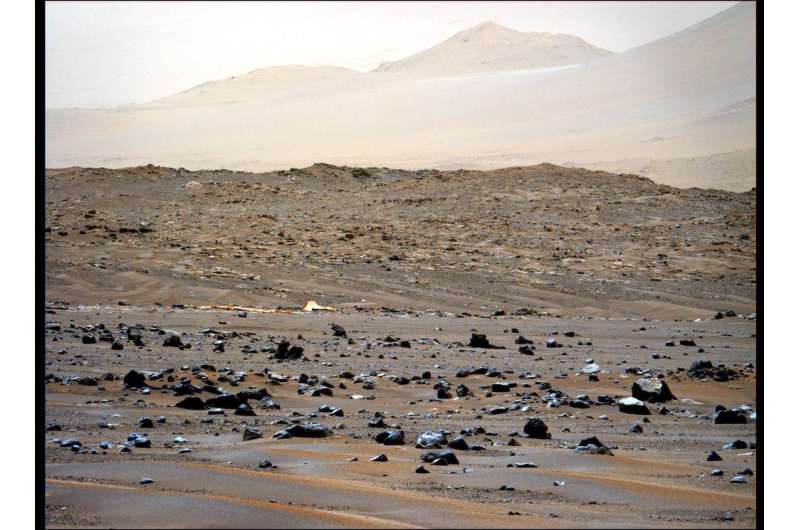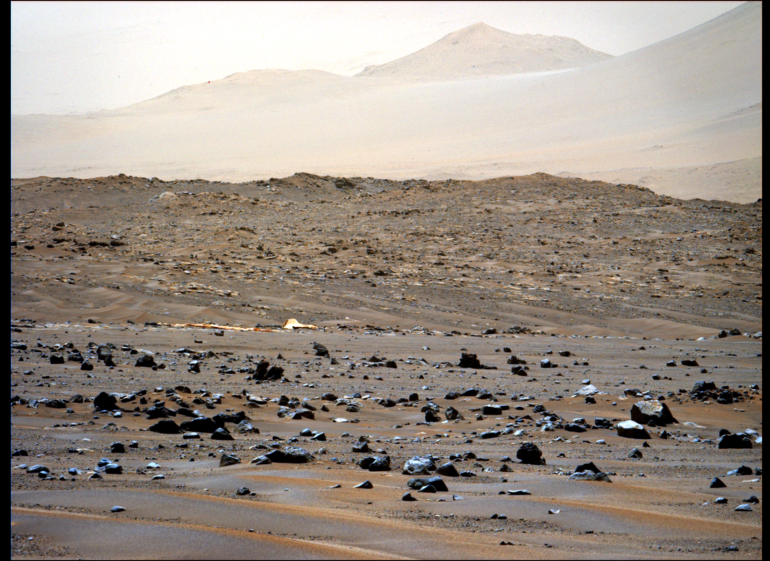After collecting eight rock-core samples from its first science campaign and completing a record-breaking, 31-Martian-day (or sol) dash across about 3 miles (5 kilometers) of Mars, NASA’s Perseverance rover arrived at the doorstep of Jezero Crater’s ancient river delta April 13. Dubbed “Three Forks” by the Perseverance team (a reference to the spot where three route options to the delta merge), the location serves as the staging area for the rover’s second science expedition, the “Delta Front Campaign.”
“The delta at Jezero Crater promises to be a veritable geologic feast and one of the best locations on Mars to look for signs of past microscopic life,” said Thomas Zurbuchen, the associate administrator of NASA’s Science Mission Directorate in Washington. “The answers are out there—and Team Perseverance is ready to find them.”
The delta, a massive fan-shaped collection of rocks and sediment at the western edge of Jezero Crater, formed at the convergence of a Martian river and a crater lake billions of years ago. Its exploration tops the Perseverance science team’s wish list because all the fine-grained sediment deposited at its base long ago is the mission’s best bet for finding the preserved remnants of ancient microbial life.

This image of the parachute that helped deliver NASA’s Perseverance Mars rover to the Martian surface was taken by the rover’s Mastcam-Z instrument on April 6, 2022, the 401st Martian day, or sol, of the mission. © NASA/JPL-Caltech/ASU/MSSS
Using a drill on the end of its robotic arm and a complex sample collection system, Perseverance is gathering rock cores for return to Earth—the first part of the Mars Sample Return campaign.
Perseverance is kicking off its second science campaign more than a month earlier than planned due to the rover’s ability to autonomously negotiate Jezero Crater’s sandpits, craters, boulders, and fields of sharp rocks. The rover’s six flight-grade-aluminum wheels completed 3,116.25 revolutions during the 16,617-foot (5,065-meter) journey to Three Forks. Averaging 692 feet (211 meters) per drive (no driving occurred on six sols), the rover’s artificial-intelligence-assisted auto-navigation capability, or AutoNav, assessed 10,744 navigation camera images during the road trip and commanded the rover to halt and turn in place to negotiate surface hazards 55 times.
More about Perseverance
A key objective for Perseverance’s mission on Mars is astrobiology, including the search for signs of ancient microbial life. The rover will characterize the planet’s geology and past climate, pave the way for human exploration of the Red Planet, and be the first mission to collect and cache Martian rock and regolith (broken rock and dust).
Subsequent NASA missions, in cooperation with ESA (European Space Agency), would send spacecraft to Mars to collect these sealed samples from the surface and return them to Earth for in-depth analysis.
The Mars 2020 Perseverance mission is part of NASA’s Moon to Mars exploration approach, which includes Artemis missions to the Moon that will help prepare for human exploration of the Red Planet.
Provided by
Jet Propulsion Laboratory
Citation:
Perseverance rover arrives at ancient river delta for new science campaign (2022, April 19)



